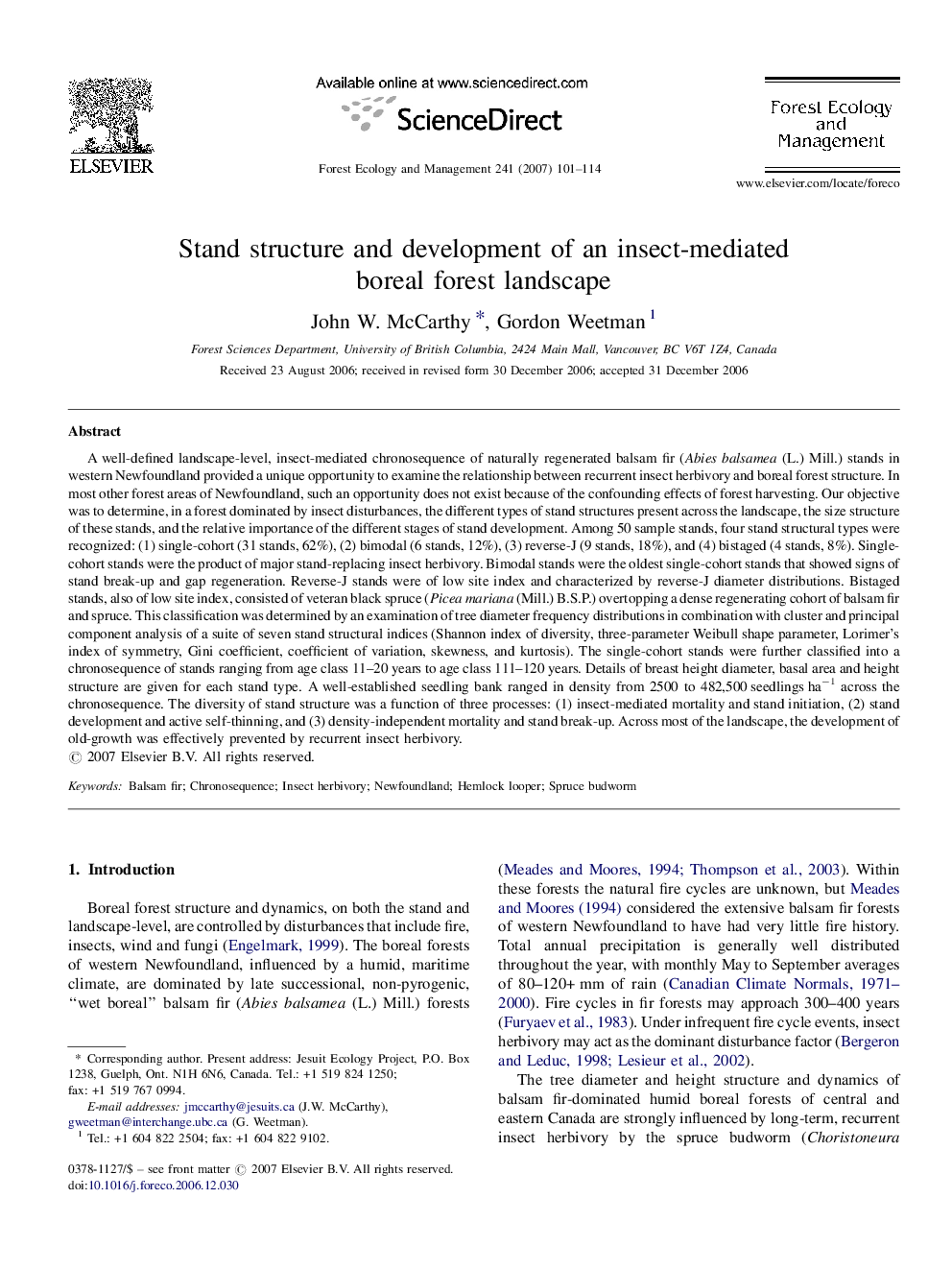| کد مقاله | کد نشریه | سال انتشار | مقاله انگلیسی | نسخه تمام متن |
|---|---|---|---|---|
| 90768 | 159396 | 2007 | 14 صفحه PDF | دانلود رایگان |

A well-defined landscape-level, insect-mediated chronosequence of naturally regenerated balsam fir (Abies balsamea (L.) Mill.) stands in western Newfoundland provided a unique opportunity to examine the relationship between recurrent insect herbivory and boreal forest structure. In most other forest areas of Newfoundland, such an opportunity does not exist because of the confounding effects of forest harvesting. Our objective was to determine, in a forest dominated by insect disturbances, the different types of stand structures present across the landscape, the size structure of these stands, and the relative importance of the different stages of stand development. Among 50 sample stands, four stand structural types were recognized: (1) single-cohort (31 stands, 62%), (2) bimodal (6 stands, 12%), (3) reverse-J (9 stands, 18%), and (4) bistaged (4 stands, 8%). Single-cohort stands were the product of major stand-replacing insect herbivory. Bimodal stands were the oldest single-cohort stands that showed signs of stand break-up and gap regeneration. Reverse-J stands were of low site index and characterized by reverse-J diameter distributions. Bistaged stands, also of low site index, consisted of veteran black spruce (Picea mariana (Mill.) B.S.P.) overtopping a dense regenerating cohort of balsam fir and spruce. This classification was determined by an examination of tree diameter frequency distributions in combination with cluster and principal component analysis of a suite of seven stand structural indices (Shannon index of diversity, three-parameter Weibull shape parameter, Lorimer's index of symmetry, Gini coefficient, coefficient of variation, skewness, and kurtosis). The single-cohort stands were further classified into a chronosequence of stands ranging from age class 11–20 years to age class 111–120 years. Details of breast height diameter, basal area and height structure are given for each stand type. A well-established seedling bank ranged in density from 2500 to 482,500 seedlings ha−1 across the chronosequence. The diversity of stand structure was a function of three processes: (1) insect-mediated mortality and stand initiation, (2) stand development and active self-thinning, and (3) density-independent mortality and stand break-up. Across most of the landscape, the development of old-growth was effectively prevented by recurrent insect herbivory.
Journal: Forest Ecology and Management - Volume 241, Issues 1–3, 30 March 2007, Pages 101–114